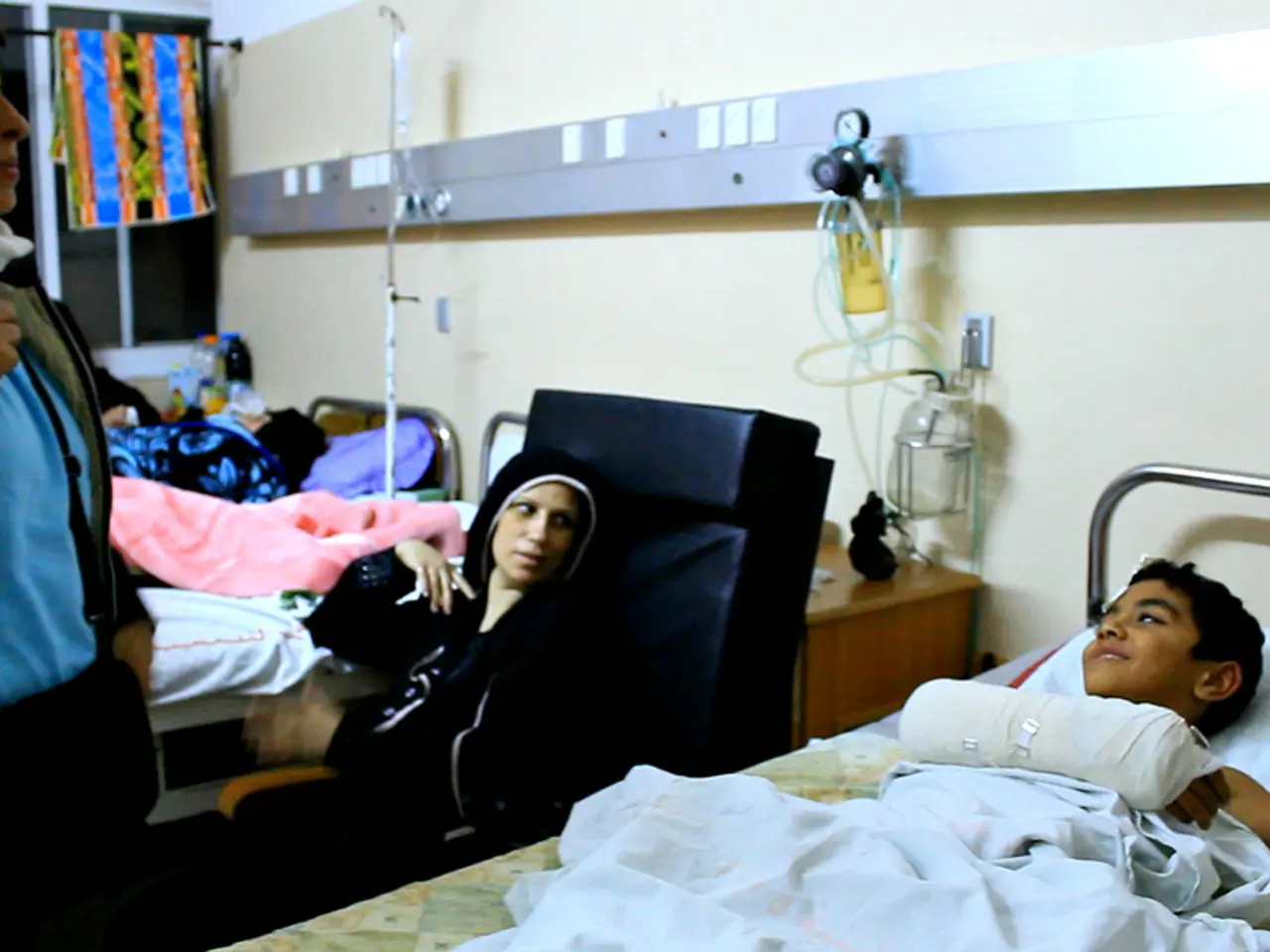COVID-19 and Muscular Pain: A Comprehensive Overview
Persistent body aches, characterized by weeks of discomfort or severe pain that significantly impacts mobility, are a concerning health issue that warrants immediate medical attention. These aches can stem from various causes, including viral infections like COVID-19 and other chronic conditions.
Causes of Persistent Body Aches
Acute infections and inflammation, such as those brought on by COVID-19, can cause systemic inflammation and muscle pain during and shortly after infection. In some cases, the effects of COVID-19 can persist, leading to multi-organ effects, autoimmune conditions, muscle weakness, and neurological symptoms known as Long COVID or post-intensive care syndrome (PICS).
Chronic pain conditions may also develop after an acute injury or illness resolves, due to hypersensitive nerve responses or ongoing nervous system changes. Other systemic issues, such as arthritis, autoimmune diseases, or post-viral syndromes, might contribute to persistent aches.
Treatments for Persistent Body Aches
Treatment for persistent body aches depends on the underlying cause. Medications like nonsteroidal anti-inflammatory drugs (NSAIDs), acetaminophen, muscle relaxers, nerve pain medications, oral steroids, and newer agents may be used for pain relief and inflammation reduction.
In some cases, injections like trigger point injections, joint steroid injections, nerve blocks, or epidural injections, and procedures like radiofrequency ablation, may be necessary to target specific sources of pain.
For those hospitalized with severe COVID-19, antiviral drugs and anti-inflammatory therapies help reduce viral load and inflammation. For Long COVID and PICS, symptom management may involve physical rehabilitation, cognitive and psychological therapies, and close monitoring of new or worsening health conditions.
Chronic pain management strategies often include physical therapy, exercise, and interventions to "retrain" the nervous system, as well as psychological support to manage the stress and impact of chronic pain on life.
When to Seek Medical Attention
Given the complexity and variability of causes, persistent body aches—especially related to COVID-19—require a multidisciplinary approach tailored to each patient’s symptoms and underlying issues. If you are experiencing persistent body aches, it is essential to consult healthcare providers for diagnosis and appropriate treatment planning.
In cases where breathing trouble, persistent chest pain, confusion, inability to stay conscious, pale or blue-colored lips or skin, or severe body aches occur, immediate medical attention is necessary.
The Centers for Disease Control and Prevention (CDC) notes that this list includes some but not all possible COVID-19 symptoms. COVID-19 can cause body aches in the muscles, which may limit mobility or energy. In the most serious cases, body aches due to COVID-19 could interfere with or prevent daily activities.
It is important to remember that the COVID-19 vaccine is safe and effective at preventing symptoms of severe disease from the virus. Body aches resulting from infections can be due to the body's immune response to a virus. In some cases, body and muscle aches are a common side effect of the COVID-19 vaccine.
In most cases, people with COVID-19 will recover within 1-2 weeks without the need for treatment, but drinking plenty of fluids and resting is usually sufficient to support recovery. Some individuals may experience persistent body and muscle aches after recovering from COVID-19.
In conclusion, persistent body aches can be a sign of various health issues, including COVID-19. If you are experiencing such symptoms, it is crucial to seek medical advice promptly to ensure proper diagnosis and treatment.
- Persistent muscle pain can be a consequence of systemic inflammation caused by acute infections such as COVID-19.
- Long COVID or post-intensive care syndrome (PICS) can lead to multi-organ effects, autoimmune conditions, muscle weakness, and neurological symptoms.
- Chronic pain, which can develop after an acute illness or injury, may be due to hypersensitive nerve responses or ongoing nervous system changes.
- Treatment for persistent body aches will depend on the underpinning cause and may include medications, injections, or procedures.
- For Long COVID and PICS, symptom management may involve rehabilitation, psychological therapies, and monitoring of new or worsening health conditions.
- Chronic pain management strategies often involve physical therapy, exercise, and nervous system interventions along with psychological support.
- Given the complexity of causes, patients with persistent body aches related to COVID-19 may require a multidisciplinary approach tailored to their symptoms and existing issues.
- Severe body aches, accompanied by breathing trouble, persistent chest pain, confusion, loss of consciousness, pale or blue-colored lips or skin, require immediate medical attention.
- Individuals with COVID-19 may recover within 1-2 weeks without requiring treatment, but some may experience persistent body and muscle aches after recovery, potentially impacting daily activities, and may require medical attention.




